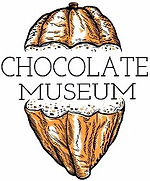

Week 6 - The Chocolate Houses
F for Frenchman & Food of the Gods
By the 17th Century, chocolate had reached most of the courts of Europe as a luxurious treat and could be sweet, hot, iced, spiced, and made with water, milk, egg or liquor.
It is around 1640 that we see the first porcelain chocolate cup called a "trembleuse" (meaning “shaky”) made to protect the fine dresses worn by the ladies of the court. The cup sat on a special saucer, held steady by a kind of collar to stop it from sliding off. The typical chocolate pot, the chocolatiere, can be traced back to the French; it had a hole in the lid to stir the drink using a molinillo and a wooden handle on the side for pouring the drink from one pot to another to produce foam.
In 1657, Frenchman opened the first chocolate house in London, at a time when chocolate was still imported as a medicine. In 1659 an advertisement read "Chocolate, an excellent West Indian drink sold in Bishopgate St, at a Frenchman’s house, the first man who did sell it in England... It cures and preserves the body of many diseases...”;
About 80 coffee house were open by 1663, but not all were interested in selling chocolate, because coffee had a stronger effect on the body. So, more chocolate houses opened and by the end of the 17th century, the most famous ones were White’s, Ozinda’s and the Cocoa Tree, all located in St James's Street and Convent Garden, the areas of nobility and political parties.
Chocolate houses were dedicated to serving chocolate and food only to men of the aristocracies or those with enough money to pay for it, unlike in France or Italy where it was strictly for nobility. The chocolate houses were places to meet, to talk about poetry, business and politics, and to gamble with dice or cards. They were very important places for socialising but were also known for being a place for immoral and bad behaviour. King Charles II even tried to close the coffee and chocolate houses by decree but it was soon forgotten.
The chocolate houses most likely initiated chocolate consumption on a larger scale leading to the huge chocolate industry we have today.
In 1684, a physician named J. Bachot, wrote his thesis on the chocolate drink and named it the nourishment of the Gods. The botanical name given to cocoa, Theobroma, was adopted, meaning “Food of the Gods” in Greek.
To download files
BUTTONS







